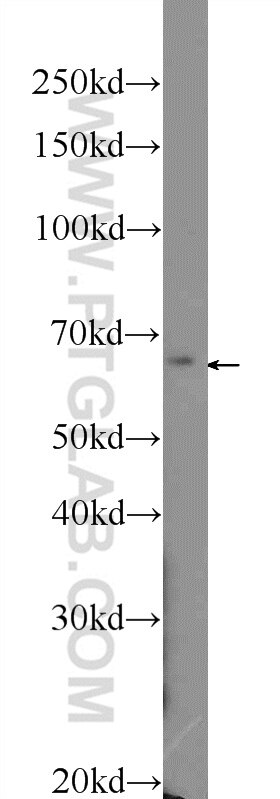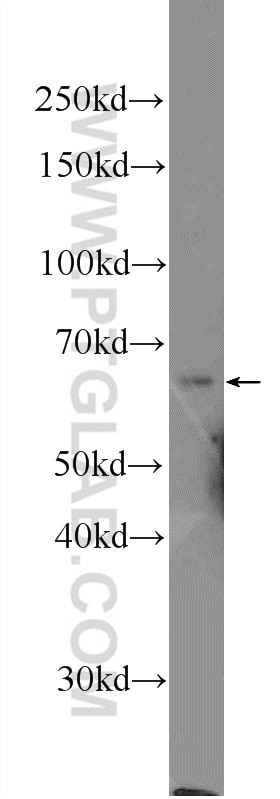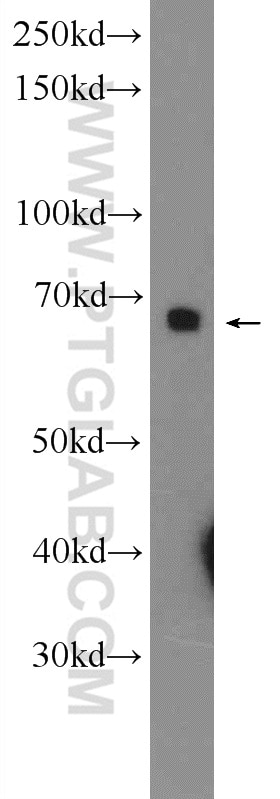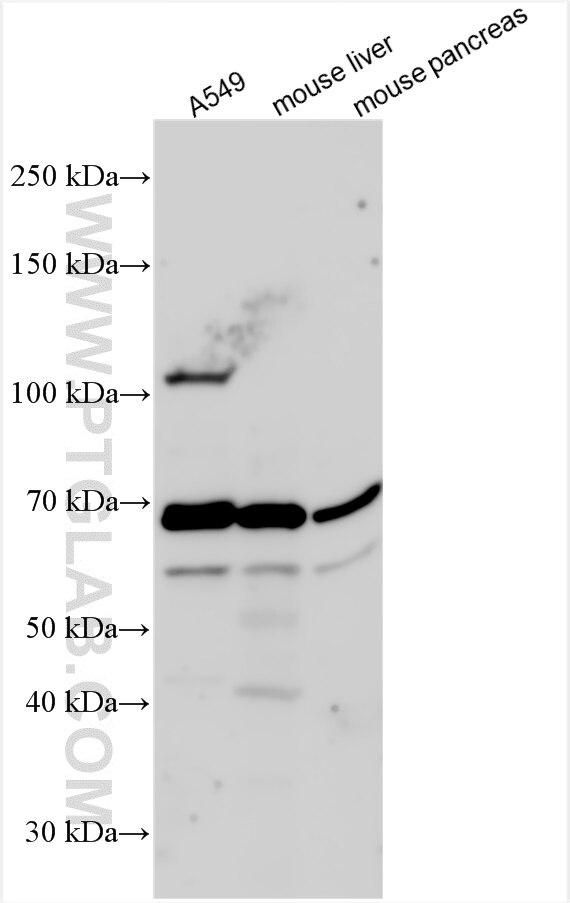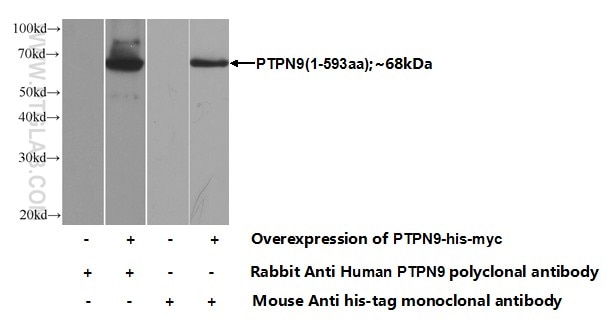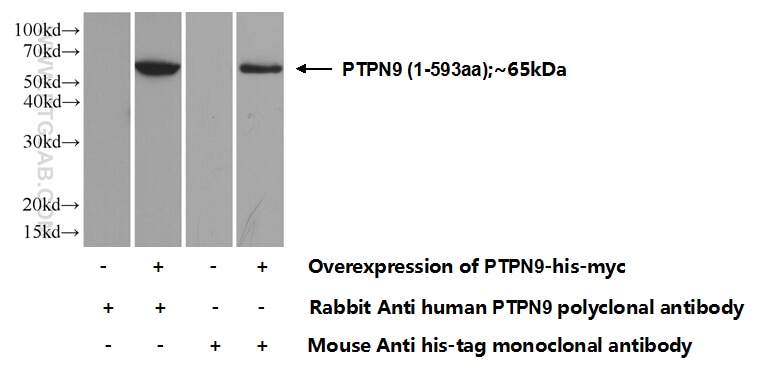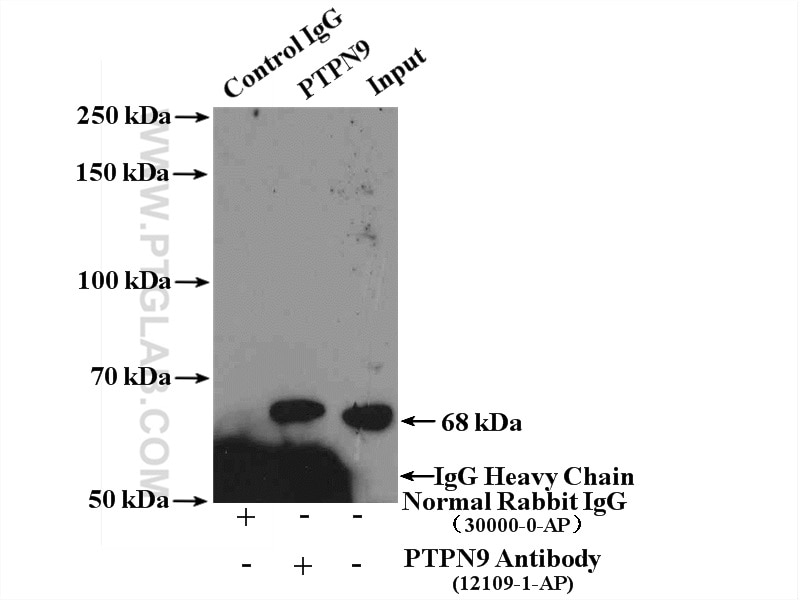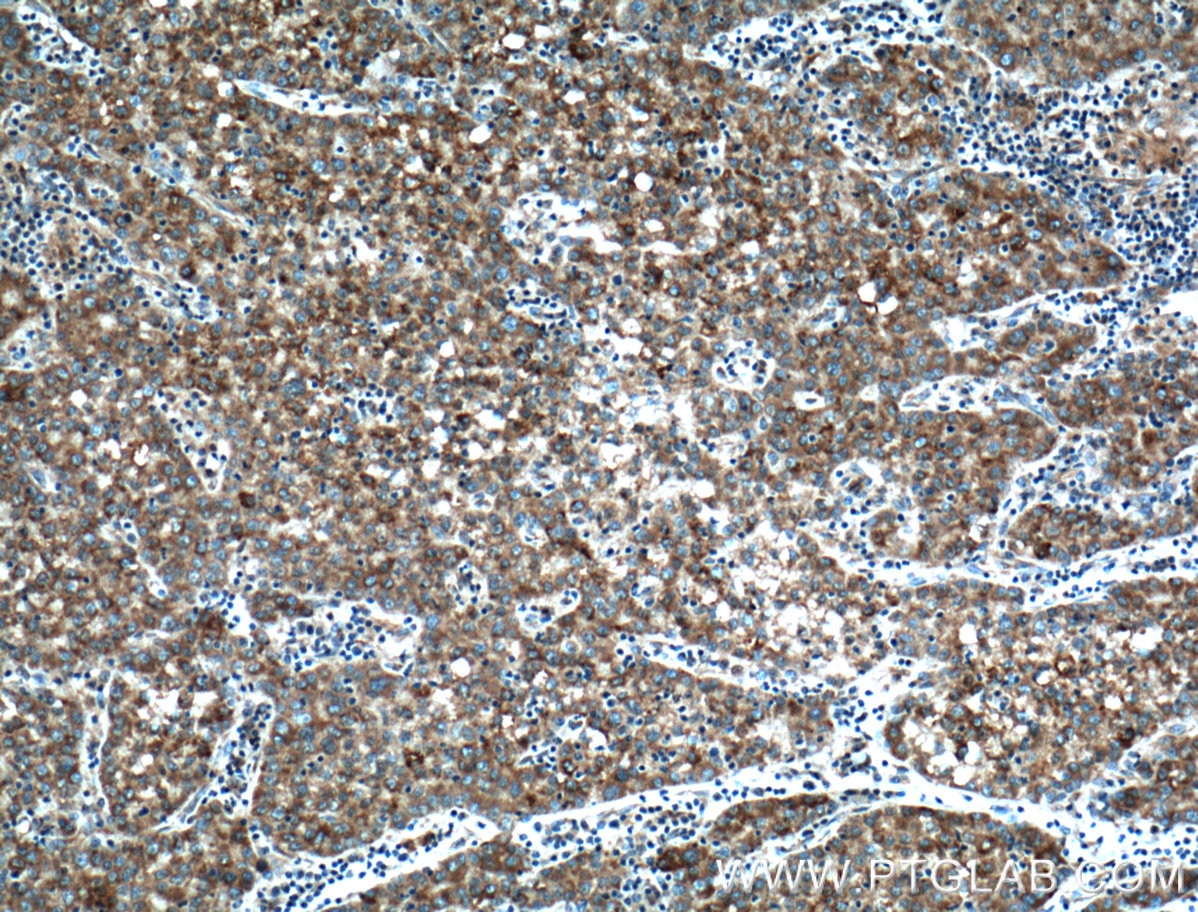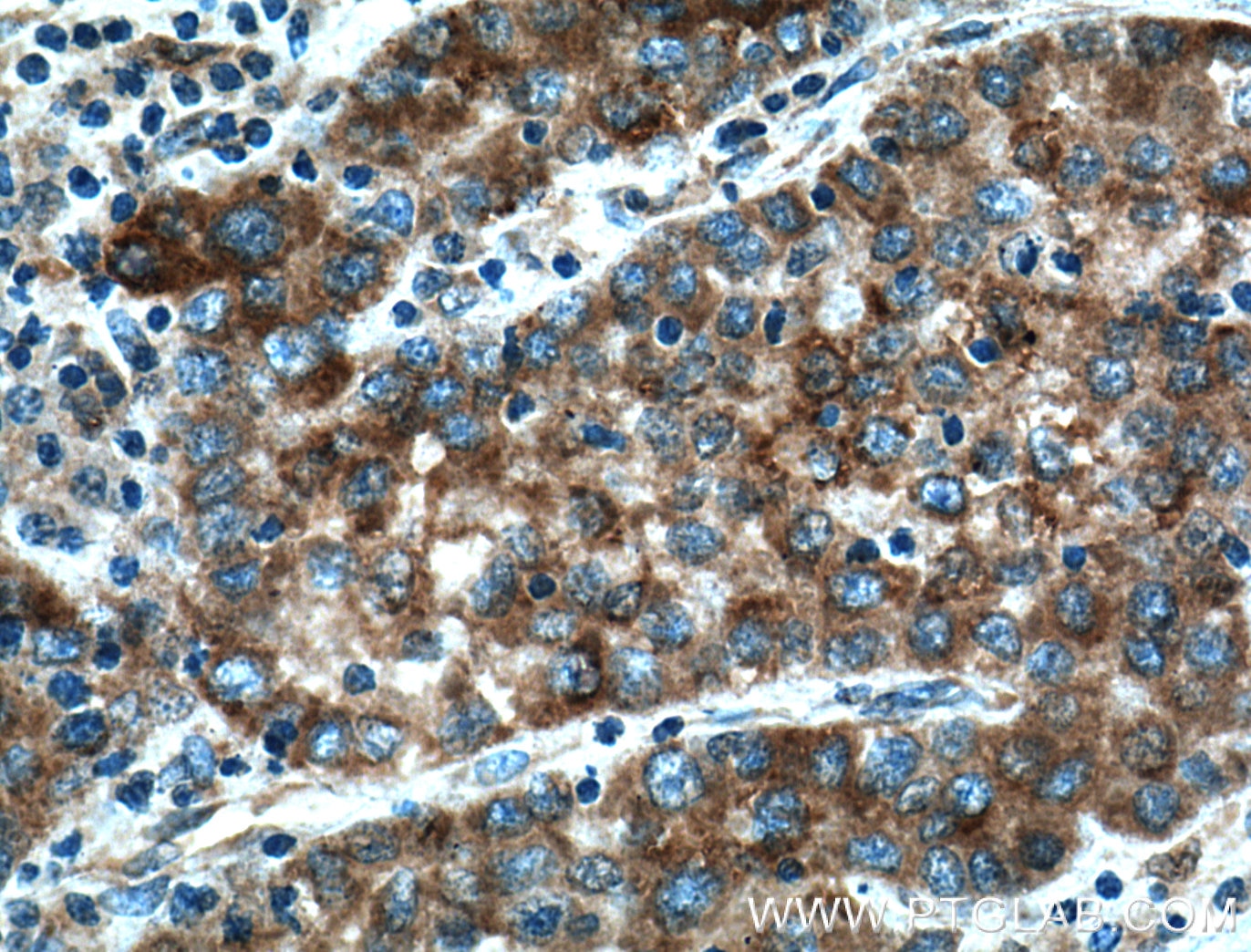PTPN9 Polyklonaler Antikörper
PTPN9 Polyklonal Antikörper für WB, IP, IHC, ELISA
Wirt / Isotyp
Kaninchen / IgG
Getestete Reaktivität
human, Maus
Anwendung
WB, IP, IHC, ELISA
Konjugation
Unkonjugiert
Kat-Nr. : 12109-1-AP
Synonyme
Geprüfte Anwendungen
| Erfolgreiche Detektion in WB | A549-Zellen, Mauslebergewebe, Maus-Pankreasgewebe, Transfizierte HEK-293-Zellen |
| Erfolgreiche IP | HEK-293-Zellen |
| Erfolgreiche Detektion in IHC | humanes Leberkarzinomgewebe Hinweis: Antigendemaskierung mit TE-Puffer pH 9,0 empfohlen. (*) Wahlweise kann die Antigendemaskierung auch mit Citratpuffer pH 6,0 erfolgen. |
Empfohlene Verdünnung
| Anwendung | Verdünnung |
|---|---|
| Western Blot (WB) | WB : 1:500-1:1000 |
| Immunpräzipitation (IP) | IP : 0.5-4.0 ug for 1.0-3.0 mg of total protein lysate |
| Immunhistochemie (IHC) | IHC : 1:100-1:400 |
| It is recommended that this reagent should be titrated in each testing system to obtain optimal results. | |
| Sample-dependent, check data in validation data gallery | |
Veröffentlichte Anwendungen
| WB | See 1 publications below |
Produktinformation
12109-1-AP bindet in WB, IP, IHC, ELISA PTPN9 und zeigt Reaktivität mit human, Maus
| Getestete Reaktivität | human, Maus |
| In Publikationen genannte Reaktivität | Maus |
| Wirt / Isotyp | Kaninchen / IgG |
| Klonalität | Polyklonal |
| Typ | Antikörper |
| Immunogen | PTPN9 fusion protein Ag2754 |
| Vollständiger Name | protein tyrosine phosphatase, non-receptor type 9 |
| Berechnetes Molekulargewicht | 593 aa, 68 kDa |
| Beobachtetes Molekulargewicht | 68-70 kDa |
| GenBank-Zugangsnummer | BC010863 |
| Gene symbol | PTPN9 |
| Gene ID (NCBI) | 5780 |
| Konjugation | Unkonjugiert |
| Form | Liquid |
| Reinigungsmethode | Antigen-Affinitätsreinigung |
| Lagerungspuffer | PBS with 0.02% sodium azide and 50% glycerol |
| Lagerungsbedingungen | Bei -20°C lagern. Nach dem Versand ein Jahr lang stabil Aliquotieren ist bei -20oC Lagerung nicht notwendig. 20ul Größen enthalten 0,1% BSA. |
Hintergrundinformationen
PTPN9, Tyrosine-protein phosphatase non-receptor type 9, is a member of the protein tyrosine phosphatase (PTP) family. PTPs are signaling molecules that regulate a variety of cellular processes including cell growth, differentiation, mitotic cycle, and oncogenic transformation. PTPN9 is involved in the transfer of hydrophobic ligands or in functions of the Golgi apparatus (PMID: 19167335). MiR-96 inhibits PTPN9 expression and consequently promotes proliferation, migration and invasion of breast cancer cells (PMID:27857177). PTPN9 can be detected double bands (PMID: 22394684). PTPN9 was located in cytoplasm and nucleus in human breast cancer (PMID: 23418360).
Protokolle
| PRODUKTSPEZIFISCHE PROTOKOLLE | |
|---|---|
| WB protocol for PTPN9 antibody 12109-1-AP | Protokoll herunterladen |
| IHC protocol for PTPN9 antibody 12109-1-AP | Protokoll herunterladenl |
| IP protocol for PTPN9 antibody 12109-1-AP | Protokoll herunterladen |
| STANDARD-PROTOKOLLE | |
|---|---|
| Klicken Sie hier, um unsere Standardprotokolle anzuzeigen |
